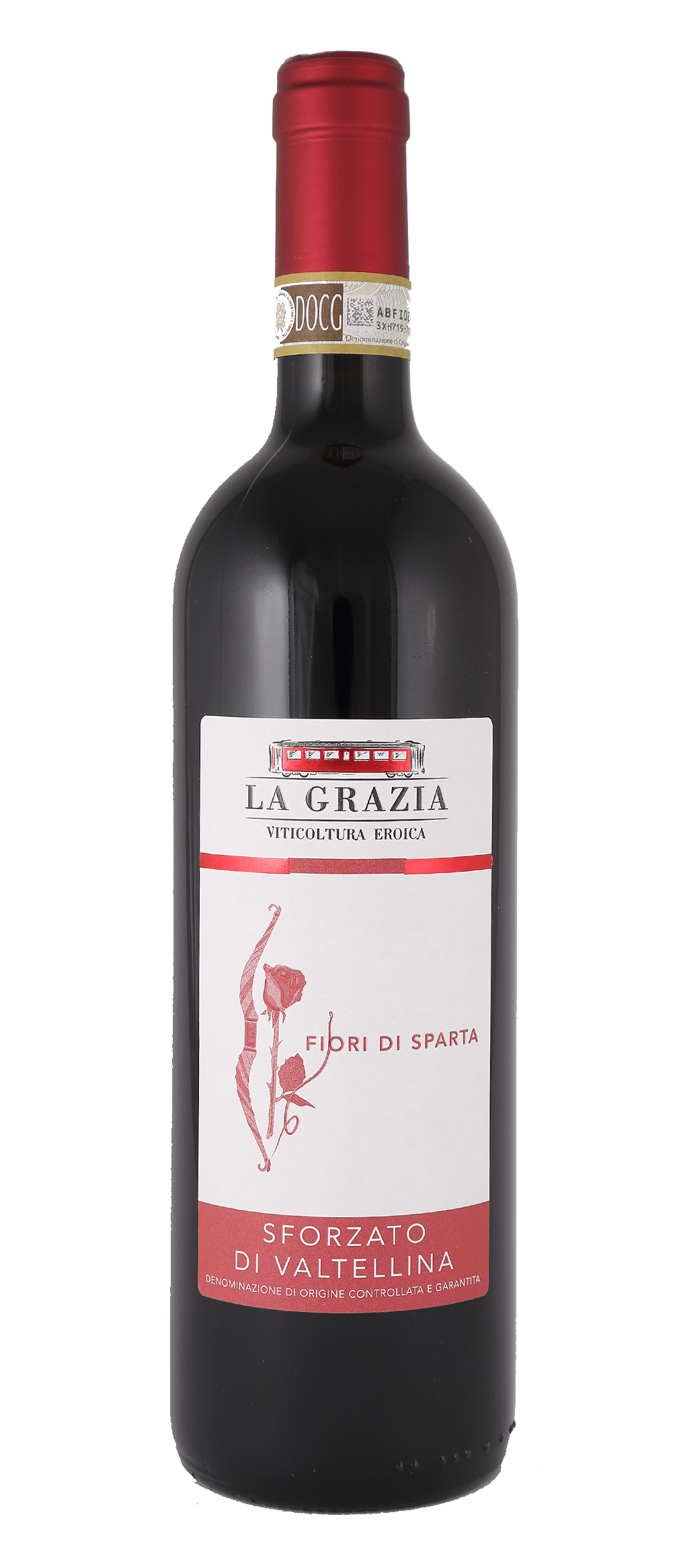
Sforzato di Valtellina
Controlled and Warranted Designation of Origin
The name “ FIORI di SPARTA” is a tribute to the eponymous association of disabled youths based at the company.
The origin (the vine, the grape)
Nebbiolo – chiavennasca vines are selected; in virtue of their exposure and position, they benefit from special temperature range conditions, giving rise to thicker-skinned grapes. This characteristic is essential for a better and more gradual raisining process.
Vines are constantly monitored during the entire bunch development period, particularly centred around managing the ratio between grape quantity and leaf foliage. Upon veraison, if necessary partial thinning and/or the pruning of grape bunches is carried out.
Once ripe (by around the 5th-10th-15th October, varies according to year), grapes are harvested by selecting impeccably healthy bunches with the best conformation.
Grape bunches are then placed directly into crates in a single layer before being moved to special grape drying facilities. Here the bunches undergo further selection and any broken or imperfectly developed grapes are removed; bunches are spaced out to favour the circulation of ventilation.
Autumn nights bring the first cold spells, accompanied by a low degree of humidity. These are optimal conditions for the start of dehydration (raisining).
Over the next 90/110 days, from October to December or even January, the Sforzato grapes are left to rest in natural and spontaneous climatic conditions which in Tirano are characterised by frequent ventilation, a low degree of humidity and occasionally very bitter nights.
The Cellar
After raisining, the grapes appear dehydrated (deflated), due to the loss of approximately 35%-40% of their water content, with a high concentration of aromas and grape sugars.
The time is ripe for pressing: grapes are separated from the stalk and pressed to obtain an extremely dense and cool must, as storage over winter considerably lowers grape temperature.
This must is placed in vats and the alcoholic fermentation process slowly beings, in many cases lasting several weeks. During fermentation, all sugars concentrated in the grapes are turned into alcohol, resulting in a structured and full wine, rich in aromas and extracts.
It is presumed that these are the qualities which inspired the name “sforzato”: transformed into something robust and powerful.
The wine has been created however despite being impressive, it is still somewhat coarse and rustic. Therefore it requires the right amount of time for respectful and patient rest. This operation is completed with suitable ageing in barrels and oak barriques, at a constant temperature and over a length of time which varies according to the strength of the year’s harvest, between 18 to 30 months.
After a further 6-8 months of ageing in the bottle, it is now ready to be savoured.
In the glass
Heavenly, warm and enveloping (alcohol content is always almost 15% vol.).
Bright ruby red in colour, with intense perfumes in which ripe blackberry, cherries in spirit and hints of prunes prevail. On the palate it is extremely soft, dry, structured and full of character, with a slight hint of toasted and chocolate notes.
An aristocratic and refined wine, also for contemplation, perfect served with roast meats and noble game.
Evolution
A wine which in virtue of its origin and constitution, can withstand even long periods of ageing in the bottle, up to 15 years. However if destined for serving with food, it optimally expresses itself with 6-10 years of ageing.
Lengthier periods of ageing make it suitable for serving alone, or with shards of seasoned cheeses.
